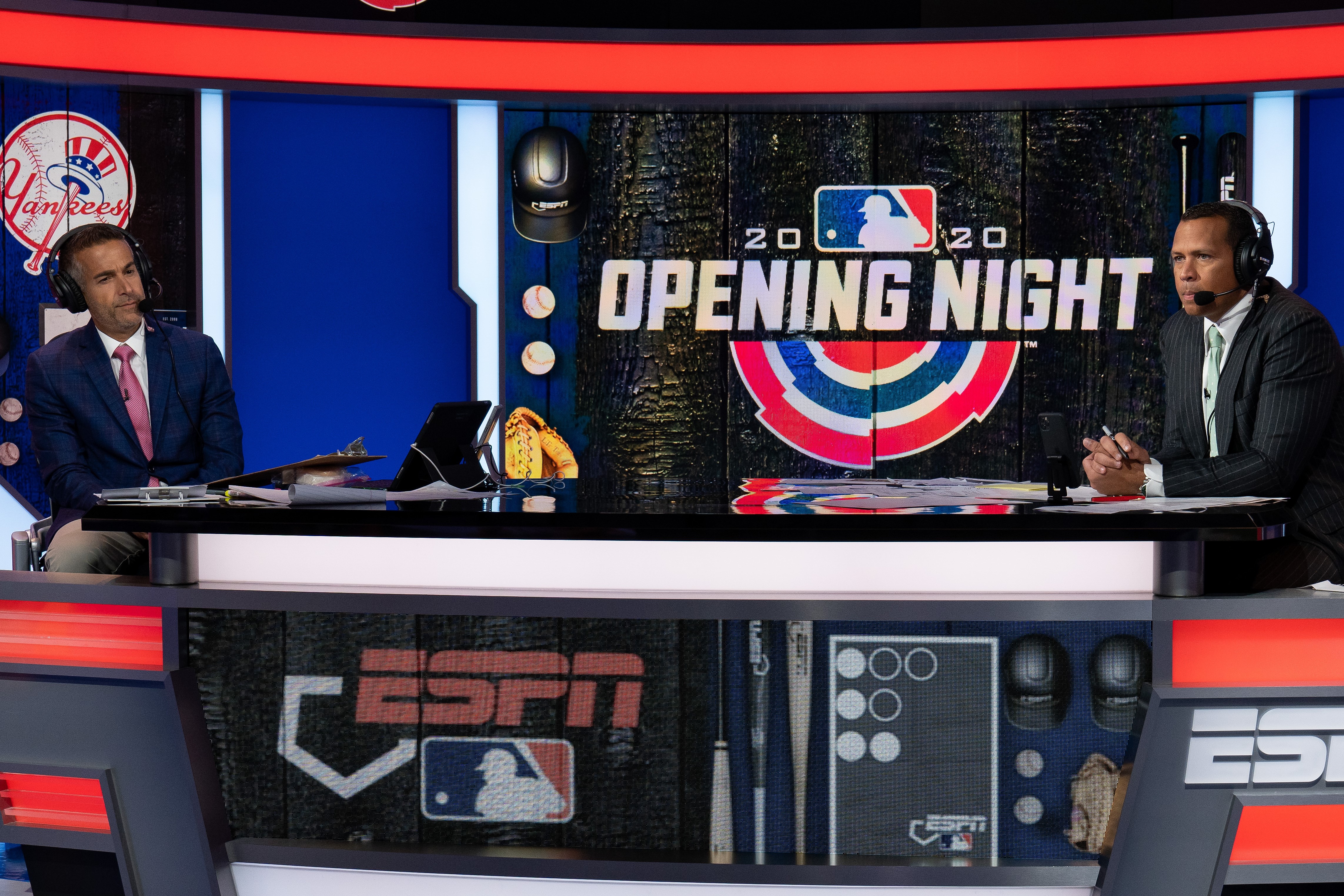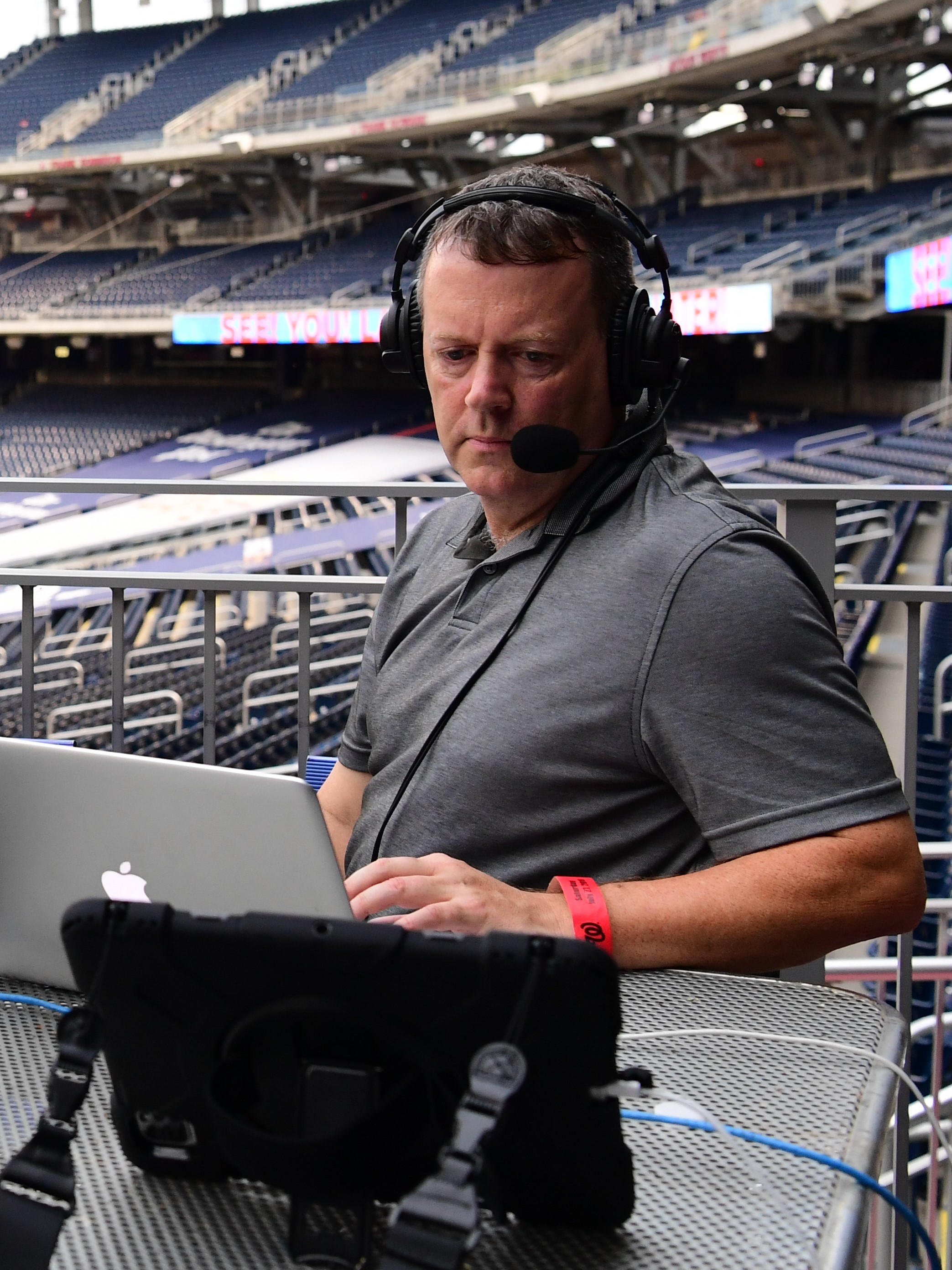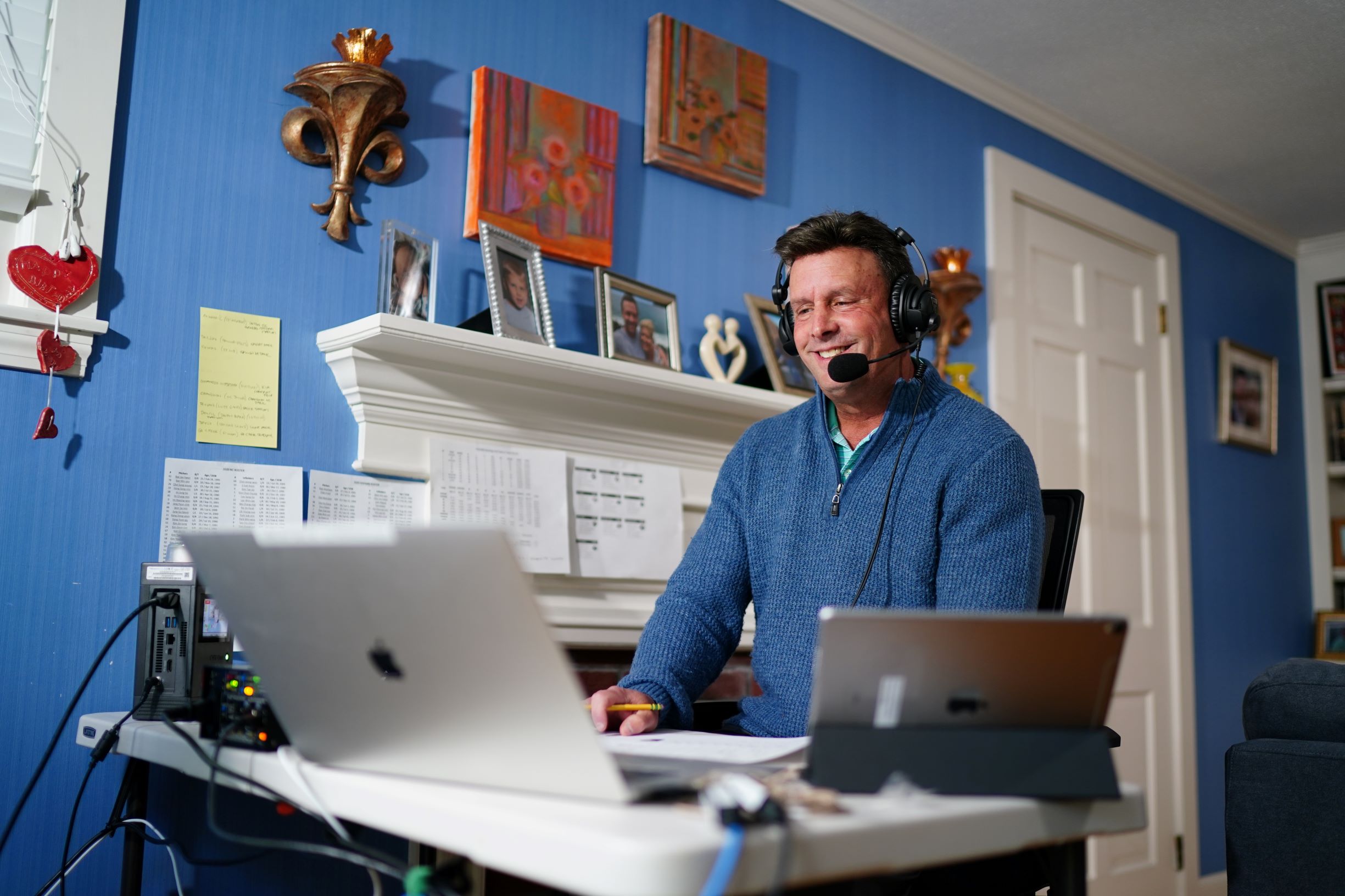ESPN Baseball’s Back With Remote Production
COVID has pushed network to use technology to be more efficient

Baseball season starts Wednesday but it’s still not exactly Take Me Out to the Ballgame for ESPN, which will televise four opening day matchups including an exclusive telecast of the New York Mets playing the Washington Nationals.
COVID-19 is still keeping most fans out of stadiums and is forcing television networks to alter the way they produce and announce games.
At ESPN, many of the techniques and procedures used last season will still be in place for at least the beginning of 2020, said ESPN coordinating producer Phil Orlins.
Technology enables ESPN to put on a good show despite having many of its announcers and producers working from home, or at least away from the ballpark.
Also Read: RSNs Scramble for Streaming Deals as Opening Day Approaches
“The capacity to transfer data, speed at extremely high speeds is great from MLB ballparks,” said Orlins speaking to reporters. It is also less costly and more efficient than flying a squadron of people and a fleet of trucks from city to city. “I think this is a place where we probably needed to be eventually, and because of circumstances that took place last year, got there quickly and will stay there.”
Orlins noted that on a personal level, “I do miss working in a truck. I miss going out to dinner in far-off cities, things of that nature.”
The smarter way to stay on top of broadcasting and cable industry. Sign up below
But from a professional point of view, business is business and there’s no crying in baseball.
Also Read: The Five Spot: Jessica Mendoza, Baseball and Softball Analyst, ESPN
"If we were coming out with a business plan in a world where extraordinary quantities of data can be transferred at the speed of light all across the globe and I came out with a plan that said we were going to fly everybody to site to meet a massive set of trucks for every game, I don't know how far I would get in presenting that business plan," Orlins said.
Instead of the traditional armada of production trucks, most of ESPN's technical activities will be done remotely, centralized from its Bristol headquarters, with about 20% of games being produced at a hub in Charlotte.

For Sunday Night Baseball, Orlins said he expects that reporter Buster Olney will be on site at every game, while play-by-play man Matt Vasgersian and baseball star turned analyst Alex Rodriguez will start the year in the Bristol studio.
“We like the concept of the reporter at the site,” he said. “In some ways I think it actually has increased the essential value of the reporter for him to be the one person at site.”
As for Vasgersian and Rodriguez moving from the studio to the stadium, “I don't know that I have any guarantees, predictions on when that would change or if that will change,” Orlins said.
Orlins said there are advantages and disadvantages to having ARod and other analysts in the studio. It’s easier for him to stay focused at the studio, with fewer distractions and visitors, Orlins said.
Rodriguez and other ESPN staffers won’t be getting access to players and coaches if and when they go to the ballpark. “The reality of it right now is if you're not going to be allowed on the field and you're not going to be allowed in the clubhouse and all you're going to do is go to a booth.” he said.
“So then the other question really comes down to how you call the game,” he said. “I think the reality of it is probably 95% good from Bristol or from home if you have your home setup set up really properly, which is not a guarantee for everybody. Some people are better with technology, set up better monitors and all that kind of stuff, and other people frankly struggle with it.
Calling the game from home can be tricky because you can see only what’s on a screen. ESPN provides announcers with multiple screens, including the tight shots viewers see n TV, plus a wide angle that shows the whole field.

Even at the ballpark, a play-by-play announcer balances his time between looking at a monitor and being able to look up at the field and see everything happening.
“It's not as easy as it sounds,” Orlins said. “It's really hard for an announcer to bounce back and forth between like vivid program shots where the players look normal and then like try to, in the middle of a play, switch over and watch little ants running around. It's almost alluring to look at the prettier, bigger pictures.”
An announcer captivated by the better shot might see a runner rounding third base, but miss the outfielder bobbling the ball, so that’s something that needs to be managed.
He added that ESPN is getting more out of Zoom calls with the managers. “They're quick to get on, to get started. There's not as many people hovering around, waiting outside the office, extra people coming in, coming out, things of that nature," he said.
Crowd reaction remains an issue. With some fans in the stadium it will be easier for ESPN to avoid the sound of an empty ballpark.
Also Read: FCC Gives ESPN COVID-19-Related Break on Audio Descriptions
“I miss the authentic sound, but I also miss the personality. Like I just miss the kid or the father catching the home run.” Instead a home run ball will rattle around empty seats until an attendant goes and gets it. “I miss the fun,” he said.
For Sunday NIght Baseball there will be plenty of cameras, with at least 10 manned and some additional robotic cameras. There will be a minimum of five super slo-mos at games, with one ultra-slow motion.
There will be a small ESPN core crew at site, plus, a substantial local crew at site. “but the productions themselves, the producers, the directors, the switching, lead audio, et cetera, all take place in the control room back in Bristol,” Orlins said.
Weekday games will also be fully produced through Bristol and Charlotte control rooms. Those games will work off a world feed provided by the home regional sports network. ESPN enhance that feed with at least two or more of its own cameras.
“That allows us to kind of cut on and off of their world feed and cover the stories that we're talking about, the people that we're talking about, create our own highlight packages,” Orlins said.
Last year ESPN did the non-exclusive games with none of its own people on site. It hired some people through the local teams, and local RSNs. This year it is bringing a small single truck and taking the RSN world feed through that truck back to Bristol and hiring two or three camera operators. That means having six to eight people at the game and about 25 people in Bristol.
For its national games, ESPN will have about 40 people at the site, including about 12 camera operators. Six or seven people will be traveling from ESPN and the rest will be local. That’s “very very small compared to what it would have been when the full crew was travelling,” he said.
About 25 people will work on the games from Bristol.
Orlins noted that ESPN has been growing its baseball audience among women and Hispanics.
“We have an interesting, different and diverse group of talent,” he said. “I've never really presented a lineup that is this multilingual and this diverse, and I just think it's a good place to be with where we're seeing our research indicate the sport is showing its most upside, its most growth.”
Jon has been business editor of Broadcasting+Cable since 2010. He focuses on revenue-generating activities, including advertising and distribution, as well as executive intrigue and merger and acquisition activity. Just about any story is fair game, if a dollar sign can make its way into the article. Before B+C, Jon covered the industry for TVWeek, Cable World, Electronic Media, Advertising Age and The New York Post. A native New Yorker, Jon is hiding in plain sight in the suburbs of Chicago.

